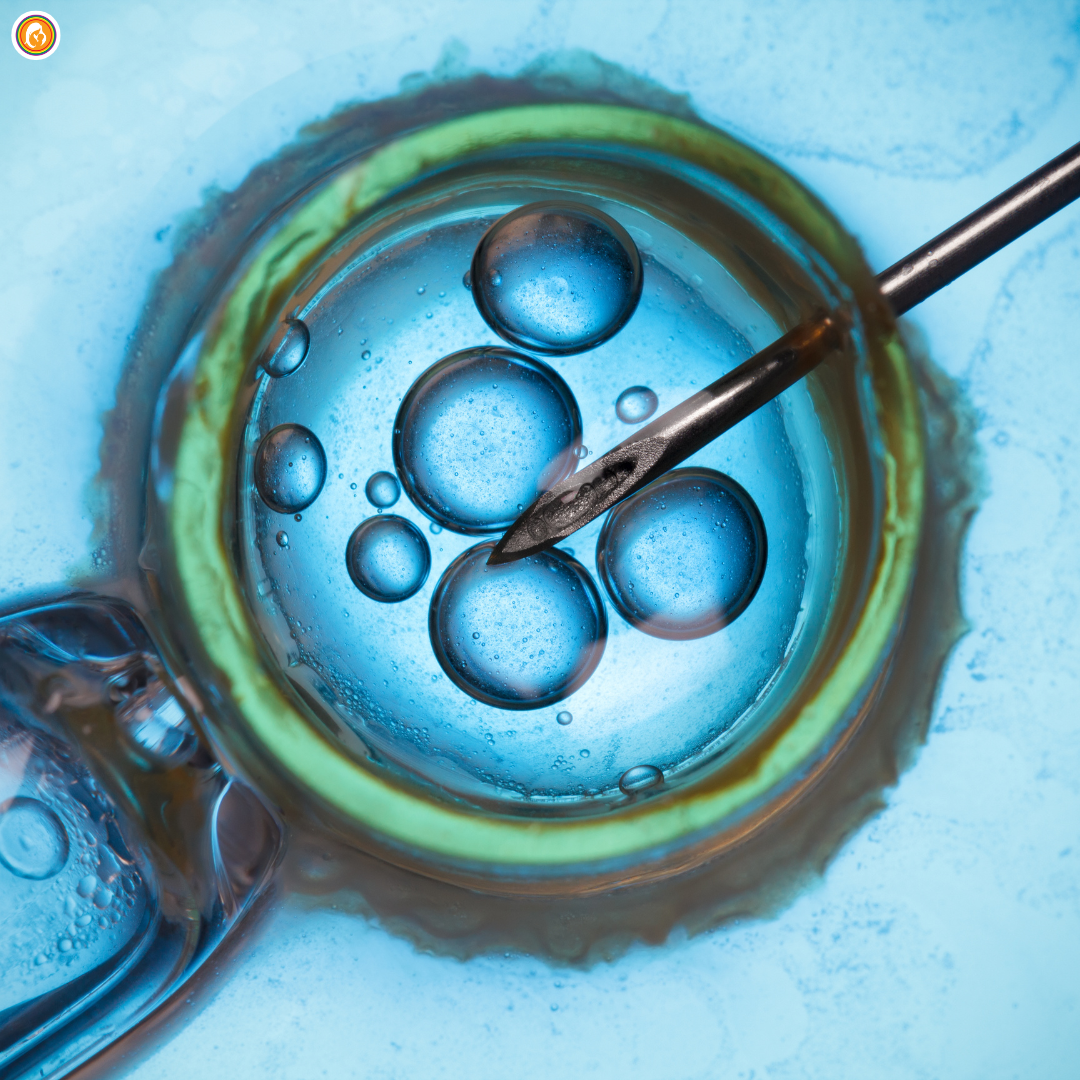Surrogate Mother Success Rates: What You Need to Know
Surrogacy success rates depend on several key factors, including the surrogate’s health, embryo quality, and the clinic’s expertise. On average, the success rate for a surrogate pregnancy per embryo transfer ranges from 50% to 75%, with higher rates when using genetically tested embryos (PGT-A). Factors like the age of the egg donor, medical screening of the surrogate, and IVF technology significantly impact outcomes. Countries with advanced fertility regulations and top-tier clinics often report higher success rates. Understanding these factors can help intended parents make informed decisions for a successful surrogacy journey.
The U.S. Centers for Disease Control and Prevention (CDC) says surrogacy is the most promising fertility treatment today. Surrogacy success rates show pregnancy chances up to 75%. And after conception, success can hit 95%.
Fertility centers all over are seeing a big change in reproductive tech. Ten years ago, only 1% of embryo transfers used gestational carriers. But in 2019, that number jumped to 5%. This shows how much more people are accepting and seeing success in surrogate pregnancies.
Get in touch for a Free Surrogacy Consultancy:
📲 91-8800481100 ( WhatsApp, Line, Viber)
📮www.georgiasurrogacyagency.com
Key Takeaways
- Surrogacy offers the highest fertility treatment success rates
- Success rates can reach up to 95% after initial pregnancy confirmation
- Embryo transfer rates have increased significantly in recent years
- Younger donor eggs contribute to higher success probabilities
- Professional screening ensures optimal surrogate selection
Additional guide for intended parents:
How Much Does Surrogacy Cost in Argentina
Understanding Surrogacy Success Rates
Surrogacy success is determined by multiple medical, legal, and procedural elements. Here are the primary factors that influence the outcome:

1. Type of Surrogacy and Its Impact on Success
- Gestational Surrogacy: Most commonly used; involves an embryo created via IVF and transferred to the surrogate.
- Traditional Surrogacy: Less common; involves the surrogate’s own egg, making her genetically related to the child.
Gestational surrogacy has a higher success rate, primarily because clinics use high-quality embryos from young, healthy egg donors.
2. Success Rates Based on Embryo Type
| Embryo Type | Success Rate per Transfer |
| Fresh Embryos | 50% – 65% |
| Frozen Embryos | 55% – 75% |
| Genetically Tested (PGT-A) | 70% – 80% |
Using genetically tested embryos improves implantation rates and reduces miscarriage risks.
Gestational carrier success rates have really improved. Fertility centers in the U.S. are seeing great results. About 75% of surrogate pregnancies are successful. This number could go up to 95% once the carrier is pregnant.
Types of Surrogacy Arrangements
There are two main types of surrogacy:
- Traditional Surrogacy: The surrogate uses her own genetic material
- Gestational Surrogacy: The surrogate carries an embryo without genetic connection
Current Statistical Overview
Success rates for intended parents have been going up. Here are some important numbers:
- More than 90% of surrogate births are through gestational surrogacy
- About 95% of surrogate pregnancies reach full term
- Live birth rates in surrogacy are consistent across ages
CDC and SART Reporting Standards
Groups like the CDC and SART track surrogacy outcomes closely. They offer detailed reports. This helps future parents understand success rates better.
Surrogacy has seen a big rise. It went from 1% of embryo transfers to 5% in 2019. This shows more people are choosing and succeeding with surrogacy.
Key Factors Influencing success rate of surrogate mother

Factors That Improve Surrogacy Success Rates
- Surrogate’s Age & Health: Younger, healthy surrogates have higher chances of carrying a pregnancy to term.
- Quality of Embryos: Embryos from women under 35 or donors improve chances of success.
- IVF Clinic Expertise: Choosing an experienced fertility clinic enhances success rates.
- Medical Screening: Proper testing for underlying health issues ensures the surrogate is fit for pregnancy.
- Legal Framework: Countries with regulated surrogacy laws provide safer and more successful surrogacy outcomes.
Successful surrogate motherhood depends on many important factors. These factors greatly affect the outcomes of IVF surrogacy. Understanding these elements helps intended parents on their complex journey of assisted reproduction.
The most crucial aspects affecting surrogacy take-home baby rates include:
- Surrogate Health Profile: Ideal candidates are between 21-40 years old with proven reproductive health
- Comprehensive medical screening to ensure optimal physical conditions
- Psychological evaluation to confirm emotional readiness
- Proven history of successful pregnancies
Genetic material quality is key in successful surrogate births. High-quality donor eggs and sperm greatly increase pregnancy potential. Preimplantation Genetic Testing for Aneuploidy (PGT-A) can identify chromosomally normal embryos with 99% accuracy. This significantly improves implantation success.
Medical protocols also play a big role in surrogate motherhood effectiveness. Advanced techniques like careful embryo selection, precise transfer methods, and cutting-edge IVF technologies contribute to higher success rates. Clinics reporting up to 75% successful birth rates show the importance of advanced medical interventions.
Additional critical factors include:
- Balanced Body Mass Index (BMI)
- Absence of previous pregnancy complications
- Comprehensive nutritional support
- Minimal stress environment
By carefully evaluating these interconnected elements, intended parents can optimize their chances of achieving a successful surrogacy journey.
2. Success Rates Based on Embryo Type
| Embryo Type | Success Rate per Transfer |
| Fresh Embryos | 50% – 65% |
| Frozen Embryos | 55% – 75% |
| Genetically Tested (PGT-A) | 70% – 80% |
Using genetically tested embryos improves implantation rates and reduces miscarriage risks.
Age-Related Success Statistics in Surrogacy
Looking at age-related stats is key to understanding surrogacy success. Age greatly affects how well surrogacy works. This includes how many babies are born and how well the pregnancy goes.
Success Rates Across Age Groups
Live birth rates vary a lot with age. Here’s what research shows about fertility:
- Women under 35: Highest success rates at 55.6% live births
- Ages 35-37: Moderate success rates around 40.8%
- Ages 38-40: Declining success rates at 26.8%
- Over 40: Significantly reduced success rates at approximately 7%
Impact of Donor Eggs on Success
Donor eggs greatly improve surrogacy chances. Eggs from younger donors (18-30 years) boost success rates to 70-80%. This helps overcome age-related fertility issues.
| Donor Age Range | Embryo Development Success | Live Birth Probability |
| 18-25 years | 80% | 75-80% |
| 26-30 years | 75% | 70-75% |
| 31-35 years | 65% | 60-65% |
Fresh vs. Frozen Embryo Transfer Rates
How embryos are transferred affects surrogacy success. For women under 35, fresh transfers have a 41.4% live birth rate. Subsequent transfers rise to about 47%. Frozen transfers offer similar success, making planning easier.
The key to successful surrogacy lies in understanding individual biological factors and leveraging advanced reproductive technologies.

Surrogacy Success Rates by Country
| Country | Average Success Rate |
| USA | 70% – 80% |
| Georgia | 60% – 75% |
| Ukraine | 60% – 75% |
| Mexico | 50% – 70% |
| Colombia | 50% – 70% |
Fresh vs. Frozen Embryo Transfers: Which Is Better?
While both fresh and frozen embryo transfers can lead to successful pregnancies, frozen embryos have slightly higher success rates due to better preparation of the surrogate’s uterus and the ability to use PGT-A testing.
How Many Embryo Transfers Are Needed for Success?
| Number of Transfers | Cumulative Success Rate |
| 1st Transfer | 50% – 75% |
| 2nd Transfer | 80% – 90% |
| 3rd Transfer | 95%+ |
Most surrogacy journeys succeed within two to three embryo transfers.
Medical Advances Boosting Surrogacy Outcomes
New medical technologies have changed the game for surrogacy. They offer new chances for those looking to use surrogacy. Thanks to these advances, the success rates for gestational carriers have soared.
Preimplantation genetic testing (PGT) is a big leap forward. It lets doctors:
- Spot chromosomal issues
- Check embryo genetic health
- Pick the best embryos for transfer
- Lower the risk of pregnancy problems
Genetic screening like PGT-A is super accurate. It has a 99 percent accuracy rate in spotting chromosomal issues and embryo sex. This greatly improves the chances of a successful pregnancy through surrogacy.
New reproductive technologies are breaking new ground. Techniques like ICSI and advanced embryo culture are changing fertility treatments. They offer better ways to fertilize eggs and higher success rates for parents.
Today’s screening checks many aspects of reproductive health. This includes:
- Genetic tests for intended parents
- Thorough checks on donor materials
- Advanced checks on embryo quality
- Psychological readiness screenings
These medical breakthroughs not only boost success rates but also reduce risks. They give hope and confidence to those in the complex world of assisted reproduction.
Surrogacy Agency Selection and Success Correlation
Choosing the right surrogacy agency is key to a successful journey for intended parents. The agency’s screening, support, and legal setup greatly affect success.
Comprehensive Agency Screening Protocols
Top agencies have strict screening for surrogates to boost success chances. They check:
- Extensive medical health assessments
- Psychological evaluations
- Background checks
- Detailed reproductive history analysis
Agencies like Adonis Fertility International have high standards. They ensure 95% of surrogates meet medical criteria. This careful screening leads to better success rates.
Critical Support Systems
Strong support systems are vital for intended parents. Agencies offer:
- Emotional counseling
- Legal consultation
- Medical coordination
- Ongoing communication management
87% of surrogates find joy in their role, showing the value of agency support.
Legal Framework Benefits
A solid legal base offers protection and clarity. Agencies with strong laws help avoid risks and ensure smooth journeys.
By picking an agency with a good track record, thorough screening, and strong support, parents can greatly improve their chances of a successful surrogacy.
Additional guide for intended parents:
How Much Does Surrogacy Cost in India
How Much Does Surrogacy Cost In Kazakhstan
Conclusion
Surrogacy success rates depend on multiple factors, including embryo quality, surrogate health, and clinic expertise. Choosing an experienced fertility center, genetically tested embryos, and a medically screened surrogate significantly boosts the chances of success. Understanding these elements can help intended parents plan their journey with confidence.
If you’re considering surrogacy, consult with a trusted surrogacy agency and fertility specialist to optimize your chances of a successful pregnancy.
The success of surrogate IVF depends on several things. These include the age of the egg donor, the quality of the eggs, and the medical care. Young egg donors under 30 can increase success rates to 90-95%. This is especially true with the help of skilled reproductive specialists.
As reproductive technology gets better, surrogacy’s future looks bright. Parents-to-be can feel hopeful, knowing that top medical care and experts are ready to help them.
We are happy to assist you with one of our global surrogacy programs best suited you your personal, financial,, and legal needs. I am here to assist you every step of the way.
Get in touch for a Free Surrogacy Consultancy:
📲 91-8800481100 ( WhatsApp, Line, Viber)
📮www.georgiasurrogacyagency.com
FAQs for surrogacy success rate
What are the typical success rates for surrogate pregnancies?
Surrogate pregnancy success rates are usually between 65-75%. This depends on the surrogate’s health, the quality of embryos, and the medical approach. IVF in gestational surrogacy often has better success rates than traditional methods.
How does the age of intended parents and surrogates impact success rates?
Age is very important in surrogacy success. Surrogates and intended parents under 35 tend to have higher success rates. The age affects embryo quality, implantation, and pregnancy outcomes.
What medical advancements have improved surrogate pregnancy success?
Advances like preimplantation genetic testing (PGT) and better embryo culture have boosted success rates. These technologies help pick the best embryos and reduce genetic issues.
How do surrogacy agencies influence success rates?
Good surrogacy agencies help by screening well, doing thorough medical checks, and offering strong support. They match surrogates and intended parents carefully. Their legal and medical knowledge is key to success.
What factors most significantly impact surrogate pregnancy success?
Success depends on the surrogate’s health, embryo quality, medical approach, and age. Nutrition, lifestyle, and health of the surrogate are also crucial.
Are fresh or frozen embryo transfers more successful in surrogacy?
Studies suggest frozen embryo transfers might be as good as, or even better than, fresh ones. Freezing techniques have improved, offering more flexibility in surrogacy.
How do reporting organizations like CDC and SART track surrogacy success?
The CDC and SART track surrogacy success by collecting data on embryo transfers, implantation, pregnancies, and births. They use standard methods to provide reliable statistics.
What is the typical success rate for first-time surrogate pregnancies?
First-time surrogacy success rates are about 60-70%. These rates can go up with more attempts. Good medical screening, embryo selection, and team experience help improve these rates.
How important is genetic testing in improving surrogacy success?
Genetic testing is very important. Preimplantation genetic testing (PGT) helps choose embryos with the best chance of success. This technology greatly improves success rates by picking embryos with good genetics.
What support systems are crucial for successful surrogacy?
Support systems are key. They include medical advice, counseling, legal help, financial planning, and emotional support for all involved. These networks help reduce stress and improve success rates.
Source Links
- https://www.pinnaclesurrogacy.com/success-stories/surrogacy-success-rates – Surrogacy Success Rates: Key Factors & Tips | Pinnacle Surrogacy
- https://creativefamilyconnections.com/surrogacy-success-rates-2/ – Surrogacy Success Rates | How Successful is Surrogacy?
- https://www.labryofertility.com/blog/surrogacy-success-rate – Surrogacy Success Rates: Gestational Carrier & Success Factors

Highly esteemed, authoritative, and trusted professional with a 14-year of experience in international surrogacy. Advocate for Secure, Legal, and Affordable International Surrogacy.
Neelam Chhagani, MA (Counselling Psychology) and Holistic Infertility and Third-Party Reproduction Consultant.
Member of European Fertility Society, Best Surrogacy Blogger of 2020, with 300 dedicated blogs, and top contributor on Quora for Surrogacy.


Add Your Comment